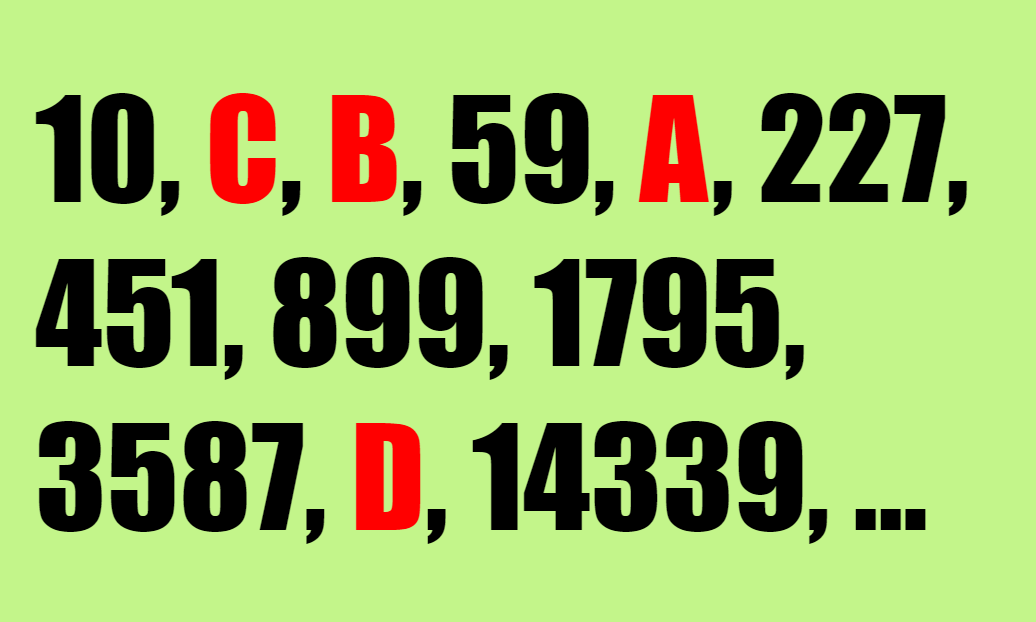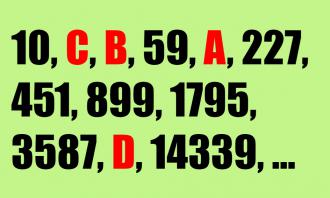Calculate A+B+C+D
Look at the series (10, C, B, 59, A, 227, 451, 899, 1795, 3587, D, 14339, ...), determine the pattern, and find the unknown values (A, B, C and D) and calculate A+B+C+D!Correct answers: 42
The first user who solved this task is Nasrin 24 T.
#brainteasers #math

A man and his wife were drivin
A man and his wife were driving their RV across the country and were nearing a town spelled Kissimee. They noted the strange spelling and tried to figure how to pronounce it - KISS-a-me; kis-A-me; kis-a-ME. They grew more perplexed as they drove into the town.
Since they were hungry, they pulled into a place to get something to eat. At the counter, the man said to the waitress: "My wife and I can't seem to be able to figure out how to pronounce this place. Will you tell me where we are and say it very slowly so that I can understand."
The waitress looked at him and said: "Buuurrrgerrr Kiiiinnnng."
Since they were hungry, they pulled into a place to get something to eat. At the counter, the man said to the waitress: "My wife and I can't seem to be able to figure out how to pronounce this place. Will you tell me where we are and say it very slowly so that I can understand."
The waitress looked at him and said: "Buuurrrgerrr Kiiiinnnng."

